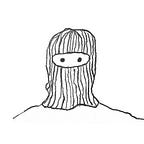Module 12: Social Network Analysis
This week the focus of our assignment was to create a social network graph using either NodeXL or RStudio. I chose to stick with RStudio because I am more experience with it and want to learn as much as I can with it.
In network maps, as in other visualization formats, we have several key elements that control the outcome. The major ones are color, size, shape, and position.
A social network is a structure of social actors joined together by connections. If you understand this structure, you have a much deeper knowledge than if you assessed the social actors in isolation.
Although I did not create a social network visualization from a data set I was able to create a basic one to show its features and describe its functionality. Sometimes its easier to show the simplest version of an example.
Code
net = rgraph(10, mode = "graph", tprob = 0.5)
net = network(net, directed = FALSE)
network.vertex.names(net) = letters[1:10]
ggnet2(net, size = 6, color = rep(c("tomato", "steelblue"), 5))The example above is at its simplest form yet best show an example of a social network visualization. We can see the connections between each node (represented by the dots) and they can be changed to different colors to show a relationship between certain nodes like if each node was a person a similar color could mean they are mutual friends on a social media platform.
Social network visualizations are good for showing relationships between things.
